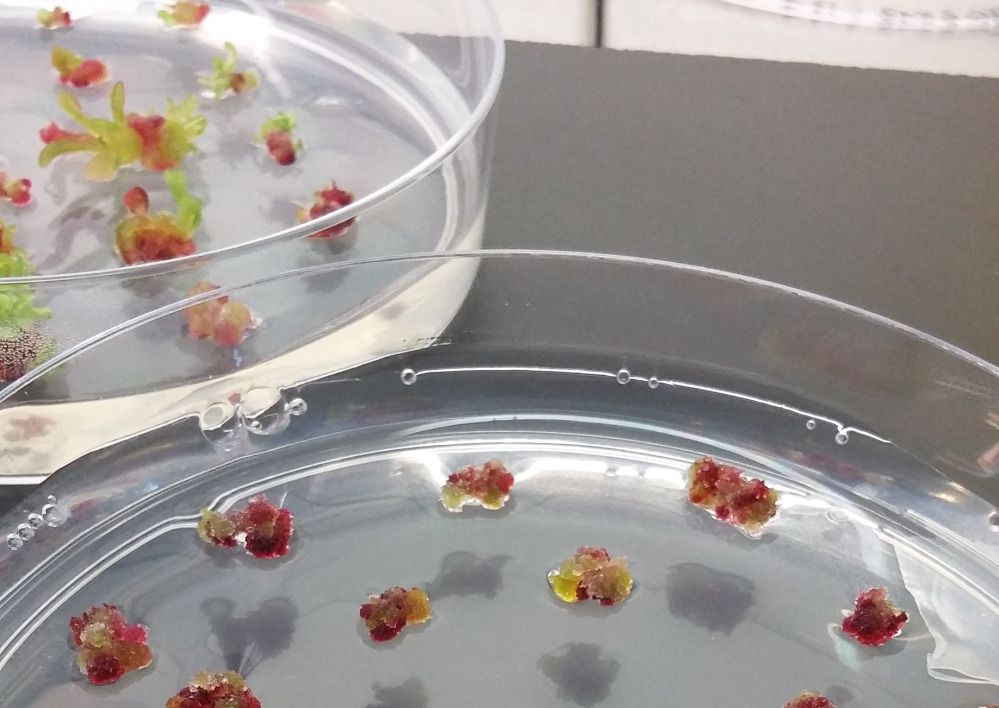Ayana Bio has launched its first ingredients (lemon balm and echinacea) made via plant cell culture, an approach it claims can provide a consistent supply of botanicals without the supply chain headaches associated with traditional agriculture.
A spinoff from synthetic biology specialist Ginkgo Bioworks formed in 2021 with $30 million in series A funding led by Viking Global Investors and Cascade Investment Group, Boston-based Ayana Bio is one of a new wave of startups making high-value ingredients from plant cell lines in bioreactors.
Rather than using photosynthesis to convert sunlight into food, companies in the plant cell culture space feed plant cells with sugars, plant hormones and other nutrients.
The bioactives the cells produce have the same composition as those found in conventionally-grown lemon balm and echinacea, two established ingredients in dietary supplements for sleep, mood and immune support, claims Ayana Bio, which is also working with saffron, cacao, and blueberries.
A consistent supply of botanicals… without the supply chain headaches
But why use plant cell culture in the first place?
According to CEO Frank Jaksch, the sweet spot for plant cell culture is where it’s too expensive or impractical to extract bioactives from fully-grown plants, and they cannot be expressed by microbes using precision fermentation.
“Even at the best of times,” sourcing a consistent supply of high-quality botanicals can be extremely challenging, as bad weather, political instability, adulteration, pesticides, heavy metals and disease can threaten supplies and create YoYo pricing, Jaksch told AFN.
“Bringing plant cell-derived health and wellness ingredients to these markets will help CPGs (consumer packaged goods companies) access the full spectrum of bioactives characteristic of these plants, without the supply chain challenges.”
In the case of cocoa, it’s not (yet) cost effective to make a commodity such as cocoa powder via plant cell culture, but it is potentially a more cost-effective route than traditional agriculture for producing high value cocoa bioactives such as flavanols, he claimed.
“I’d like to see cocoa flavanols fortified into everyday products such as chocolate milk for kids. Right now it’s too expensive and so that wouldn’t happen.”
Microbes can’t match the complexity of plants

As for the pros and cons of plant cell culture vs microbial fermentation, yeast and bacteria are great at making individual ingredients such as dairy bioactive lactoferrin or milk-coagulating enzyme chymosin. But they can’t match the complexity of many ingredients produced by plants, said Jaksch.
“Plant cells produce the full set of bioactives that are contained within that plant, not just a single, cherrypicked chemical. If you believe in getting the synergistic effects of multiple bioactives contained within a plant, you’ll never get that with precision fermentation.”
Why is plant cell culture attracting investment today?
But why is plant cell culture attracting investment dollars now, with a wave of startups from Novella and California Cultured to Green Bioactives, Ergo Bioscience, Celleste Bio, Chi Botanic, and Ayana Bio all springing up in recent years?
The technology itself is not new, and already has some applications in pharma, said Jaksch. For example, breast cancer drug Taxol contains a substance found in the bark of the Pacific yew tree that is now made commercially from plant cell culture.
However, advances in synthetic biology have helped to unlock its potential for a wider set of ingredients, claimed Jaksch, who explained that Ayana Bio uses genome sequencing to understand the genetics behind plant cells, and metabolomics to read the compounds that are being biosynthesized within cells.
While Ayana could genetically engineer its cell lines, its first products are Non GMO, said Jaksch, who noted that by knowing the underlying genetics and metabolomics behind a trait improvement, the company can selectively target specific genetics for trait improvement, without creating GMOs.
One example of this is linking genetic profiles to metabolite profiles and then using this knowledge to select cells lines that can deliver higher titers (yield of target substance) more rapidly, he said, noting that Ayana Bio has a partnership with Ginkgo BioWorks to enable high throughput screening of cells.
“Agricultural limitations have long been a hurdle in harvesting our most beneficial ingredients. Plant cell technology is creating a sustainable future of standardized botanical ingredients.” Effendi Leonard, co-founder and CTO, Ayana Bio
The mechanics of plant cell culture
Much of Ayana Bio’s time is then spent on developing the right environment (temperature, food source, etc) that will trigger the cells to produce the target bioactives efficiently, he said.
“We evaluate thousands of different conditions that we use to stress the cells, because many of the bioactives that plants make are produced as a result of stress, and then we optimize the environment.”

The commercial viability of plant cell culture
So is it scalable?
According to Jaksch, “We’ve got some early data that suggests we’re going to be able to compete with traditional agriculture for several botanical ingredients, particularly those experiencing [supply chain] problems. With agriculture, it’s so unpredictable, you can buy from one farm one year and get a great crop, and the next year the crop from the same farm is no good.
“Take cacao, where they [traditional growers] have a hard time controlling for [the uptake of] cadmium and lead [from the soil]. The reality is you’re not going to know whether you have a cadmium or lead problem until you harvest it. In the plant cell world, we don’t have to worry about that.”
In the case of echinacea, he said, “It’s definitely having some problems, one of which is that you can’t control for what species you’re getting, because a lot of them are now intermixed. You may think you’re getting angustifolia but you may be getting a mixture of purpurea and angustifolia.
“The other issue is that there’s a difference between cultivated echinacea and wildcrafted in terms of the bioactives. There’s also been a lot of price variability in echinacea recently, and contamination issues.”
Another challenge when sourcing botanicals grown via traditional agriculture is ensuring you’re getting them from the right part of the plant, as bioactives found in the aerial parts of the plant are not necessarily found in the roots, or vice versa, he said.
Ayana Bio, in contrast, is using cell lines (also known as callus) that are developed by “dedifferentiating” various parts of the plants,” said Jaksch. “The cell lines are then screened under different culture conditions, and selected for the ones that can produce the unique bioactive spectrum consistent with a specific part of the plant we’re looking for.”
The business plan: Starting with supplements, moving into food
Ayana Bio believes it has a “pathway to scale this on a very large scale,” said Jaksch, but said the firm is “starting small” with contract manufacturing partners to focus on high-value botanicals for which there is already an established market in dietary supplements.
But he added: “Ultimately, we want to get into foods, which means much higher volumes, so we have some work to do in terms of scaling up.”
Regulatory pathways
On the regulatory front for foods, Ayana Bio “has what we need for self-affirmation of GRAS [Generally Recognized as Safe status] in the US” and may file with the Food and Drug Administration (FDA) at some point down the road, he said. “It’s echinacea and lemon balm. They’re not genetically modified, and our stance is that we wouldn’t have to do regulatory filings with the FDA.”
When it comes to dietary supplements, he said, “We believe that they are ODI material [Old Dietary Ingredients, or ‘grandfathered in’ ingredients used in supplements marketed before October 1994, where there is a presumption of safety] that can be legally sold in the US market today.”
‘We don’t need to raise money anytime soon’
As for working capital, he said, Ayana Bio’s $30 million funding round in 2021 was well-timed, coming before the sharp dropoff in funding for foodtech startups that began in spring 2022.
“We’re one of the lucky companies out there in the fact that we closed a fairly sizable Series A in 2021. We’re in a pretty good position because of that, so we don’t need to raise money anytime soon. Will we have to go back to the market at some point? Probably. But don’t have to do that right now.”




